Puget Sound squid jigging sputters out of the starting gate, but a great deal of other autumn fishing and razor clam digging options to be had Leave a reply
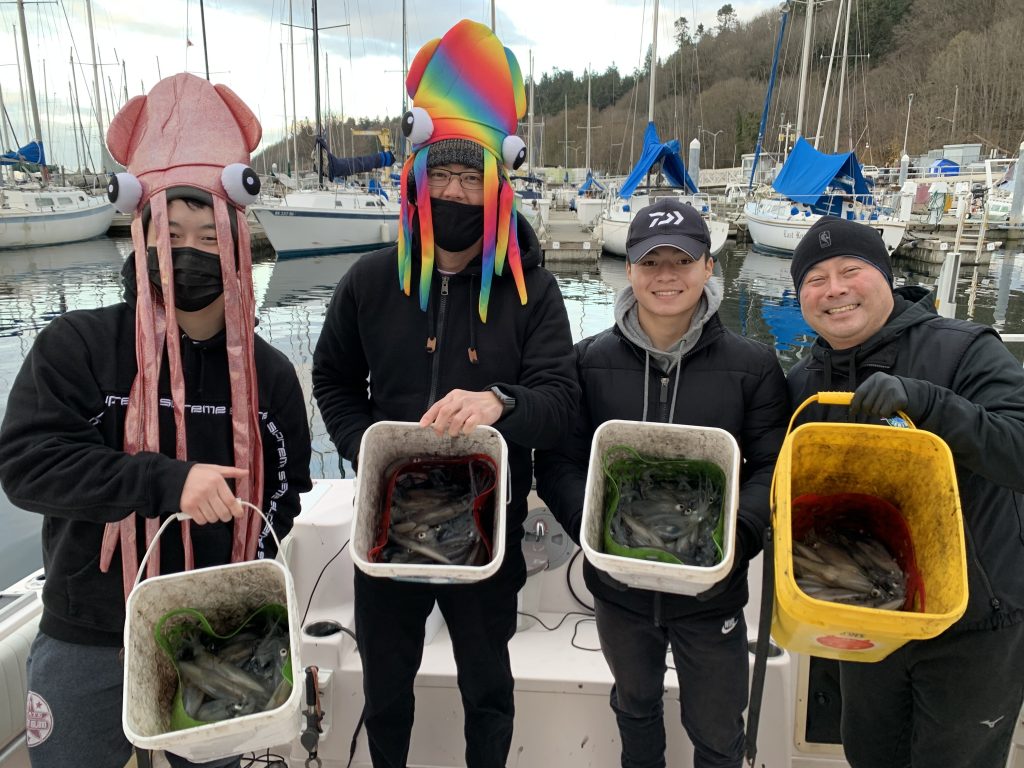
By Mark Yuasa
Usually by now the piers around Puget Sound are lit up at night with anglers doing the jig and many have been asking what’s up, but up to this point they’ve been pretty much a no show.
“I was out (Monday) probing around (and) interesting that it’s been pretty quiet along our waterfront,” said Paul Kim, owner of Seattle Squid charter service in Seattle (https://www.facebook.com/SeattleSquid/).
“I suspect they are late and maybe avoiding the big coho chasing them around,” Kim said. “The next full moon is Oct. 20, and I’m keeping my fingers crossed they will show up around then in good numbers. I know folks are eagerly awaiting their return.”
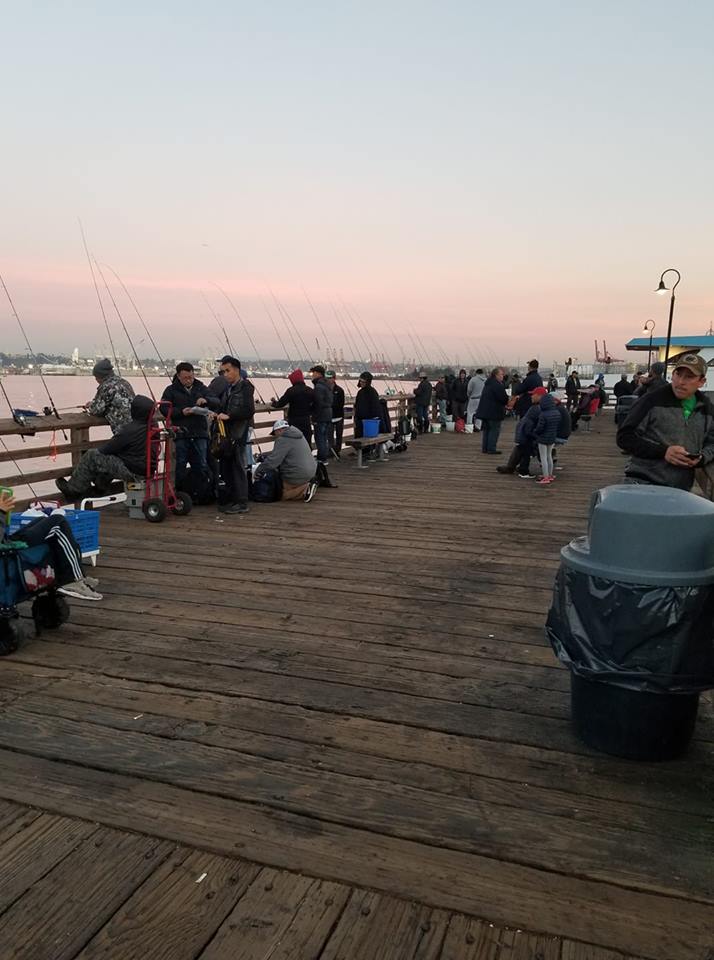
For the past several years, hordes of squid have arrived by early September, and has been a blessing by boat and off the many piers scattered across Puget Sound.
Between now and February, Puget Sound is one of top marine areas where squid migrate annually to lay their eggs along the gentle sloping rocky bottoms at depths of 15 to 80 feet.
Many have questioned why anyone would want to eat something from the polluted waters of our local bays, but keep in mind squid are migratory so they don’t ingest pollutants like a bottomfish.
Night-time on a flood tide is usually best period as squid are attracted to light, which is why public piers are great spots to catch them. Many will bring their own powerful lanterns to dangle just off the surface of the water.
Squid tend to hide in the dark, shadowy edges of lighted water and then dart out into the light on their unsuspecting prey.
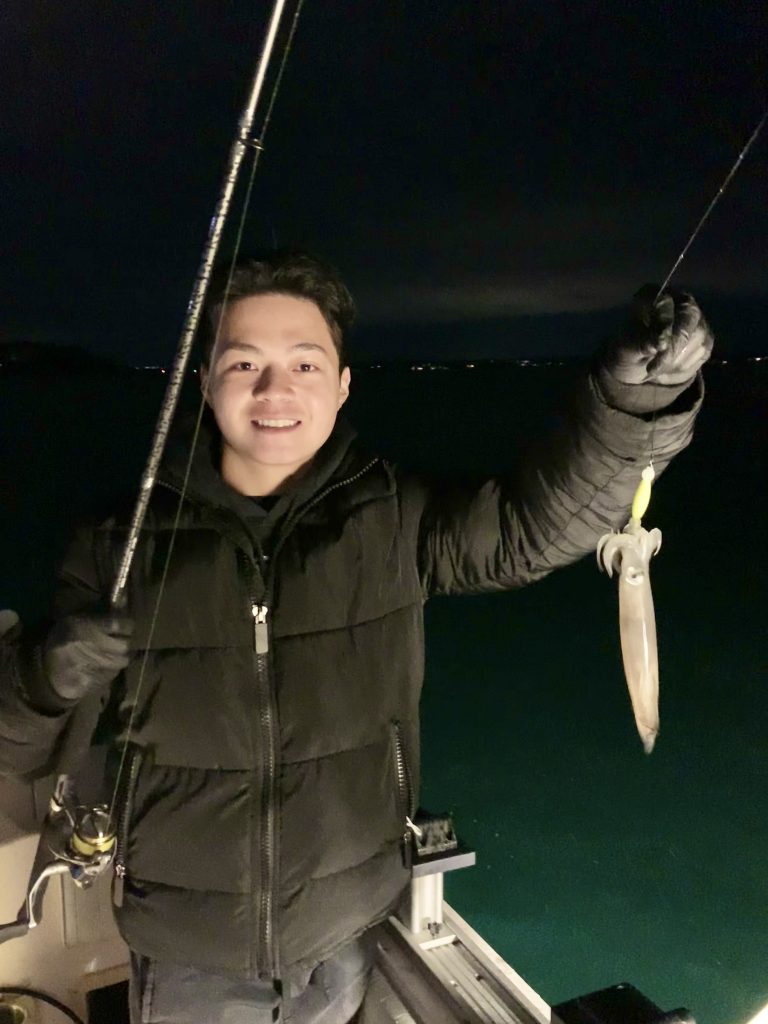
Some of the most popular places to catch squid are along the entire Seattle waterfront; the Seattle Aquarium Pier; the Seacrest (Marination) Boathouse Pier in West Seattle; Edmonds Pier; Des Moines Pier; A-Dock and Shilshole Pier; Point Defiance Park Boathouse Pier; Les Davis Pier in Tacoma; Fauntleroy Ferry Dock; Illahee State Park Pier; and the Waterman and Indianola piers in Kitsap County.
The tools of the trade are a simple trout rod and spinning reel with lightweight fishing line of 5- to 6-pound test, which will allow anglers to feel the subtle tap or vibration of a squid hitting the jig.
The weighted jigs are luminous or light-up plastic versions that come in a wide-range of colors such as pink, chartreuse, blue, red, green, orange or no-color at all. Jigs don’t have “hooks” and instead have upward slanting sharp prongs. Unweighted lures are also used by squid jiggers that attach to a one-ounce lead weight.
Regulations say no more than four lures may be used at one time so often anglers will “gang-tie” multiple jigs to their main-line. The WDFW website has information on catching squid by going to https://wdfw.wa.gov/fishing/basics/squid.
Other worthwhile ventures
There are many other autumn fishing choices happening across the state with the top picks being Dungeness crab, chinook and coho salmon and coastal razor clam digging.
“Winter crabbing (in Puget Sound) doesn’t draw as many people compared to summer, but it is a fun fishery and can be good in open marine areas,” said Don Velasquez, the head WDFW Puget Sound shellfish biologist.
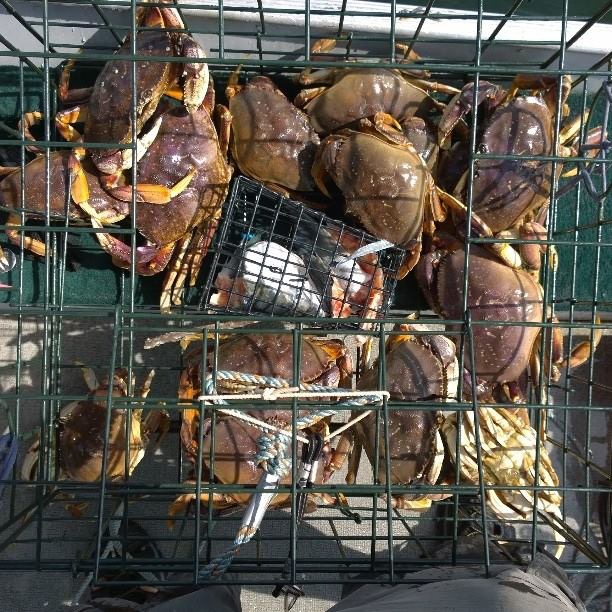
The late-season Dungeness crab openings in some areas of Puget Sound were approved after summer assessments revealed enough remained in the sport catch quota.
Dungeness crabbing is open daily through Dec. 31 in the Strait of Juan de Fuca (Marine Catch Areas 4 east of Bonilla-Tatoosh line, and 5 and 6); San Juan Islands (7); Deception Pass, Hope Island, Skagit Bay, Port Susan and Port Gardner (8-1 and 8-2); northern Puget Sound (9) and Hood Canal north of Ayock Point (12).
Sport crabbing remained closed in central and south-central Puget Sound (10 and 11) since a large portion of the state’s quota is set aside during the summer. As of early-October, WDFW was evaluating catch estimates to see if enough remained to allow a winter fishery.
Southern Puget Sound (13) and Hood Canal south of Ayock Point (12) are closed to allow Dungeness crab populations to rebuild.
Crab pots may be set or pulled from a vessel from one hour before official sunrise through one hour after official sunset. Daily limit is five Dungeness crabs (males only) in hard-shell condition.
While assessments by WDFW for this past summer are still not finished, but enough data was collected to allow for a winter crab fishery.
“We opened everything we felt comfortable with on Oct. 1, and had about 33 percent of people report their (mandatory) summer catches on the internet, which is not quite where we’d like to be, but better than last year,” Velasquez said.
What is known was the eastside of Whidbey Island, commonly referred to as Marine Catch Area 8-1 and 8-2, was better in the northern section of 8-1 although Dungeness crab catch estimates showed it was an even split in total pounds landed.
In northern Puget Sound (Area 9), the catch was about 75,000 pounds, which isn’t great compared to years past. In central Puget Sound (Area 10) it was about 32,000 pounds and had a very reduced summer season that was open two days per week from July 11 through Labor Day.
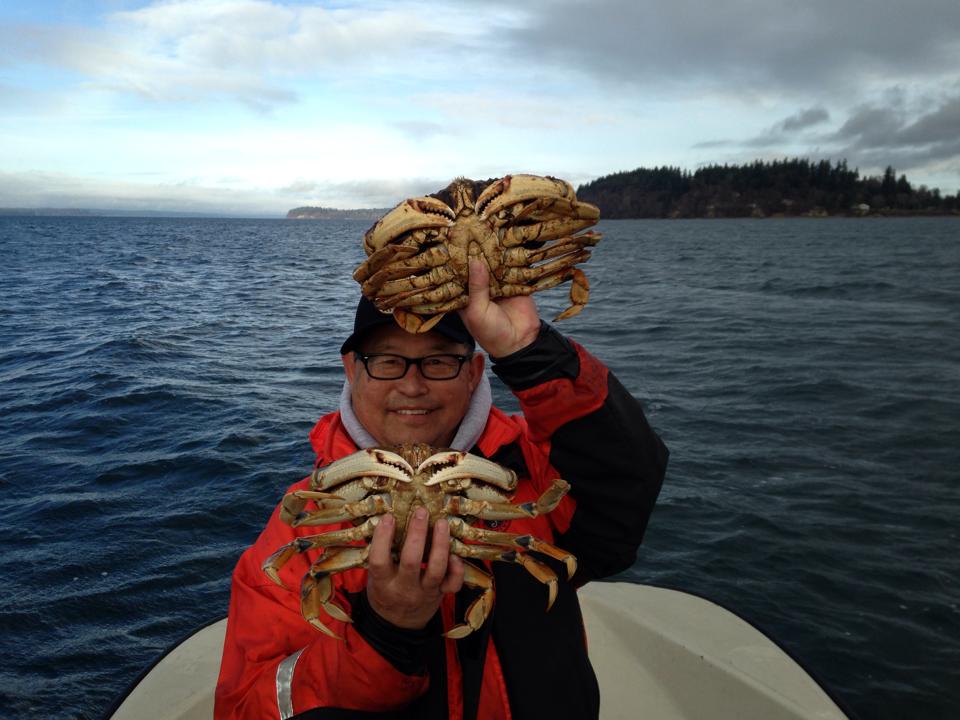
In Hood Canal (Area 12) the summer catch was about 80,000 pounds, and on par with recent year trends. The San Juan Islands (Area 7) total poundage wasn’t available, but crabbers saw an average catch this past summer.
In south-central Puget Sound (Area 11) the catch was 18,500 pounds and also had a reduced summer season open two days weekly from June 11 through Aug. 30.
“We knew the catches (in
Areas 10 and 11) wouldn’t be strong based on the restricted season and the
abundance wasn’t what we had come to expect in the past,” Velasquez said. “Area
13 (southern Puget Sound) remained closed all season as Dungeness crab
populations are still low. Overall, we did have more Puget Sound crab endorsements
(225,285 purchased) then we’ve seen in sometime and that was likely because of
the big pink salmon run.”
The summer — July through September — sport crab fishery continues to have the
highest participation level with 213,831 in 2020 catch cards issued to anglers
in 2020 (192,798 in 2019) compared to 36,459 (23,578 in 2019) during the winter
fishery.
The latest coastal razor clam marine toxin testing results that showed all open beaches are well under the action level set by the Washington Department of Health (WDOH).
Testing is conducted for Amnesic Shellfish Poisoning (ASP) from Domoic Acid, Paralytic Shellfish Poison (PSP) and Diarrhetic Shellfish Poison (DSP). Before beaches can open the WDOH protocol requires that all razor clam samples collected must test under the action level (20 ppm for domoic acid; 80 µg/100g for PSP; and 16 µg/100g for DSP).
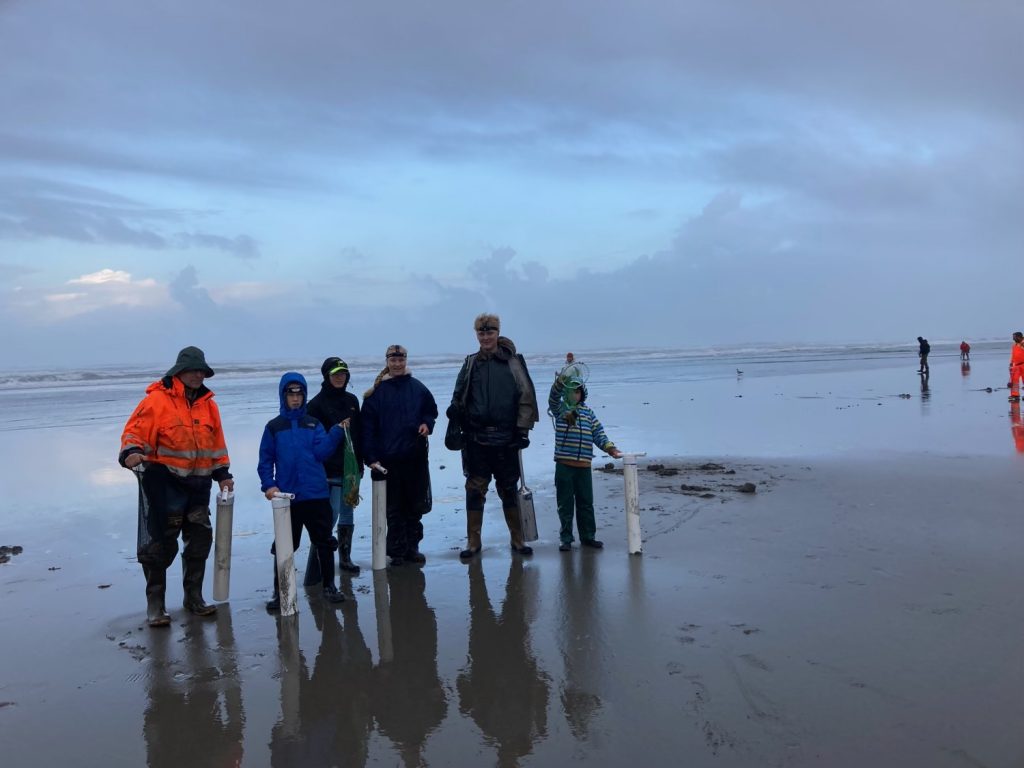
These samples were all collected on Sept. 24 – Long Beach: 3 ppm for domoic acid, and no PSP or DSP detected. Twin Harbors: 6 ppm for domoic acid, and no PSP or DSP detected. Copalis: 7 ppm for domoic acid, and no PSP or DSP detected. Mocrocks: 5 ppm for domoic acid, and no PSP or DSP detected.
Digging is open during PM tides this Friday, Oct. 8, -1.1 at 8:50 p.m. at Long Beach, Twin Harbors and Mocrocks; Saturday, Oct. 9, -1.1 at 9:38 p.m. at Long Beach, Twin Harbors and Copalis; Sunday, Oct. 10, -0.8 at 10:32 p.m. at Long Beach, Twin Harbors and Mocrocks; and Monday, Oct. 11, -0.4 at 11:32 p.m. at Long Beach, Twin Harbors and Copalis.
Once these digs are completed, WDFW will do further testing for marine toxins and announce the next tentative digs about a week before each series.
They will occur on evening low tides on Oct. 20, 22 and 24; Nov. 3, 5, 7, 9, 17, 19, 21 and 23; and Dec. 2, 4, 6, 8, 15, 17, 19, 21, 23 and 30 at Long Beach, Twin Harbors and Mocrocks; and Oct. 19, 21, 23 and 23; Nov. 4, 6, 8, 10, 16, 18, 20, 22 and 24; and Dec. 1, 3, 5, 7, 9, 16, 18, 20, 22 and 31 at Long Beach, Twin Harbors and Copalis.
The reason behind this liberal 67 days of digging being offered through Dec. 31 is an estimated 56.3-million harvestable clams on four beaches.
There are four Puget Sound marine areas still open for those seeking to put a tasty chinook or coho salmon on the holiday dinner table.
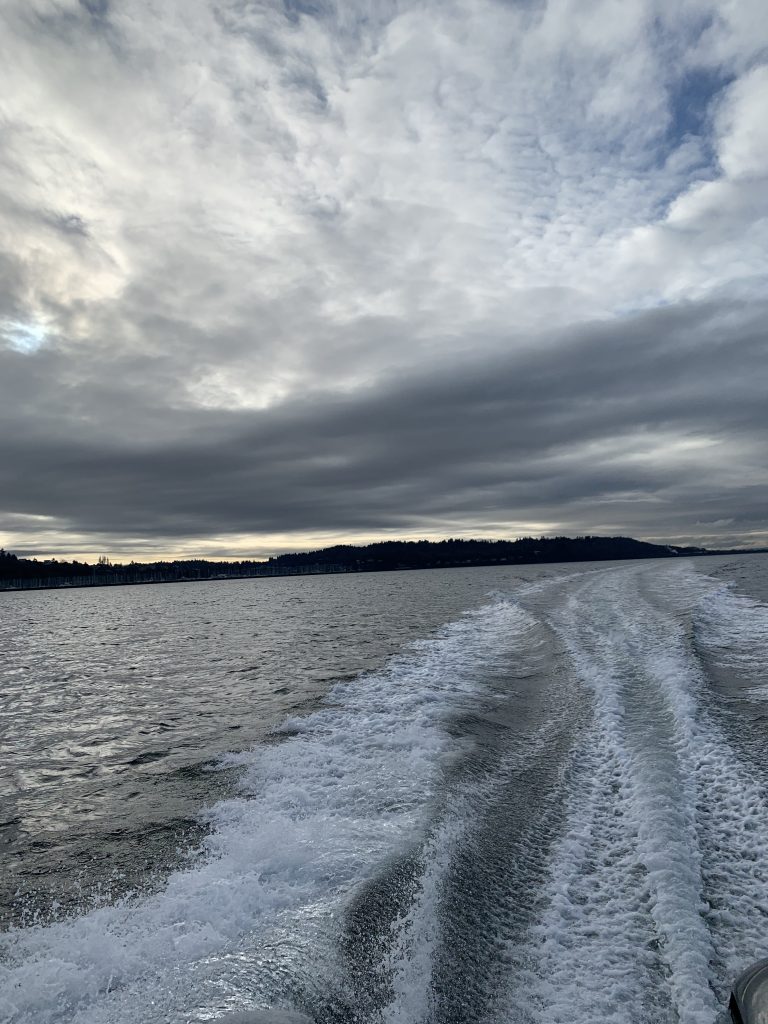
Central Puget Sound (Area 10) from Edmonds-Apple Tree Cove south to north tip of Vashon Island is open for coho through Oct. 31. The daily limit is two salmon. Release all chinook and chum.
South-central Puget Sound (Area 11) from the northern tip of Vashon Island south to the Narrows Bridge is open daily through Dec. 31. The daily limit is two salmon. The minimum size limit is 22 inches for hatchery chinook. Release all coho, chum and wild, unmarked chinook.
Southern Puget Sound (13) south of the Narrows Bridge is open year-round. The daily limit is two salmon. The minimum size limit is 22 inches for hatchery chinook. Release all chum, and wild, unmarked coho and chinook.
Hood Canal (12) is open daily through Nov. 30. There is a four salmon daily limit, and all chinook must be released.
There are also many western Washington rivers still open for salmon fishing, and check the regulation pamphlet for where you can or cannot wet a line.
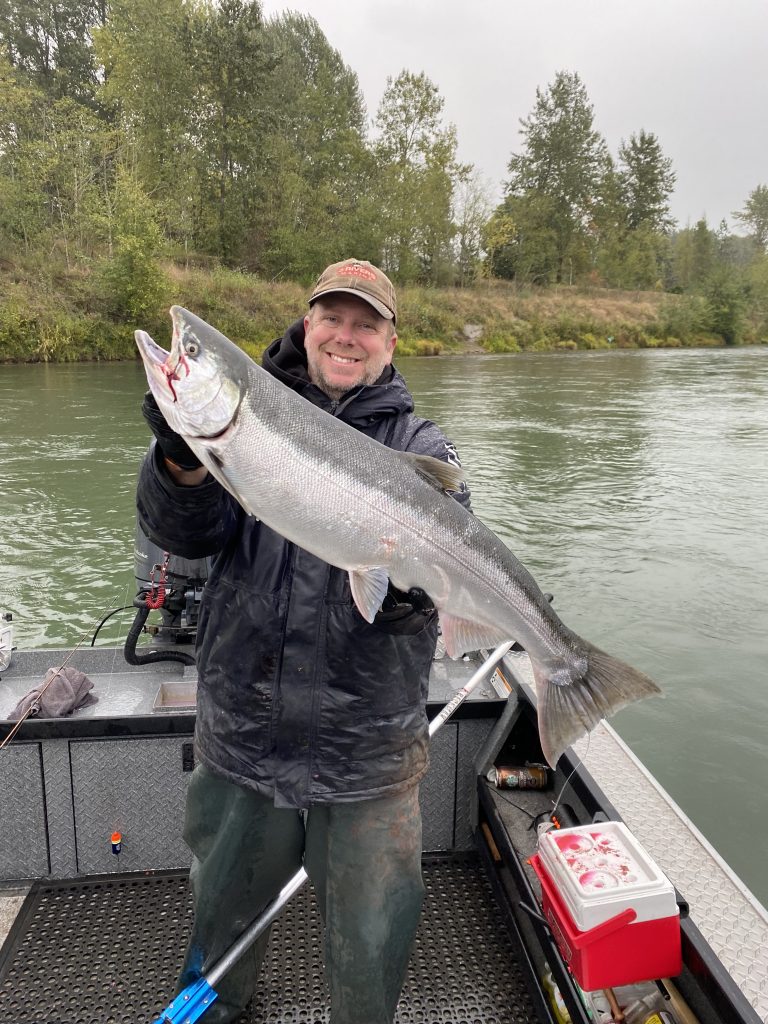
By far the best late-season in-river options happen in southwest Washington where the Cowlitz River is expecting a strong forecast of 156,690 hatchery coho. The Lewis River comes in a strong second place with a forecast of 129,313 coho.
“There’s definitely quite a few fish in (the Cowlitz), however the wild to hatchery ratio is horrible (15 to 20 percent keepers) and hopefully that part changes soon,” Todd Daniels, owner of Tall Tails Guide Service (http://talltailsguideservice.com/ or 206-437-8766) reported. “It’s picking up steam and we’ve got a phenomenal number of them returning,”
The Cowlitz Hatchery has achieved their spawning escapement goal, and the daily catch limit on the Cowlitz will increase to a combined six adult and jack hatchery coho from Oct. 9 through Dec. 31. Minimum size limit is 12 inches, and release all salmon other than hatchery coho.
The Toutle River Hatchery has also achieved their spawning escapement goal, and the daily catch limit on the North Fork Toutle River and Green River will increase from Oct. 9 through Nov. 30.
On North Fork Toutle and Green the combined daily limit is six adult and jack salmon, and only one may be an adult chinook with a minimum size limit of 12 inches. Release all salmon other than hatchery chinook and hatchery coho.
Look for coho action in the Cowlitz river system to continue well into November, and another place is the Washougal River where you’ll catch coho into early December.
One big disappointment has been the Hanford Reach area of the Upper Columbia River despite a rather robust return of upriver-bound fall chinook.
“Fishing has been very inconsistent (with) one day 10 bites, the next four (and it’s) been a harder year for sure,” said Aaron Peterson, owner of Peterson’s Northwest Guide (https://www.petersonsnorthwest.com/). “We’ve been grinding them out every day, and our customers are happy. I think the fish are shocked from water levels being jacked and shooting up the Columbia faster than normal.”
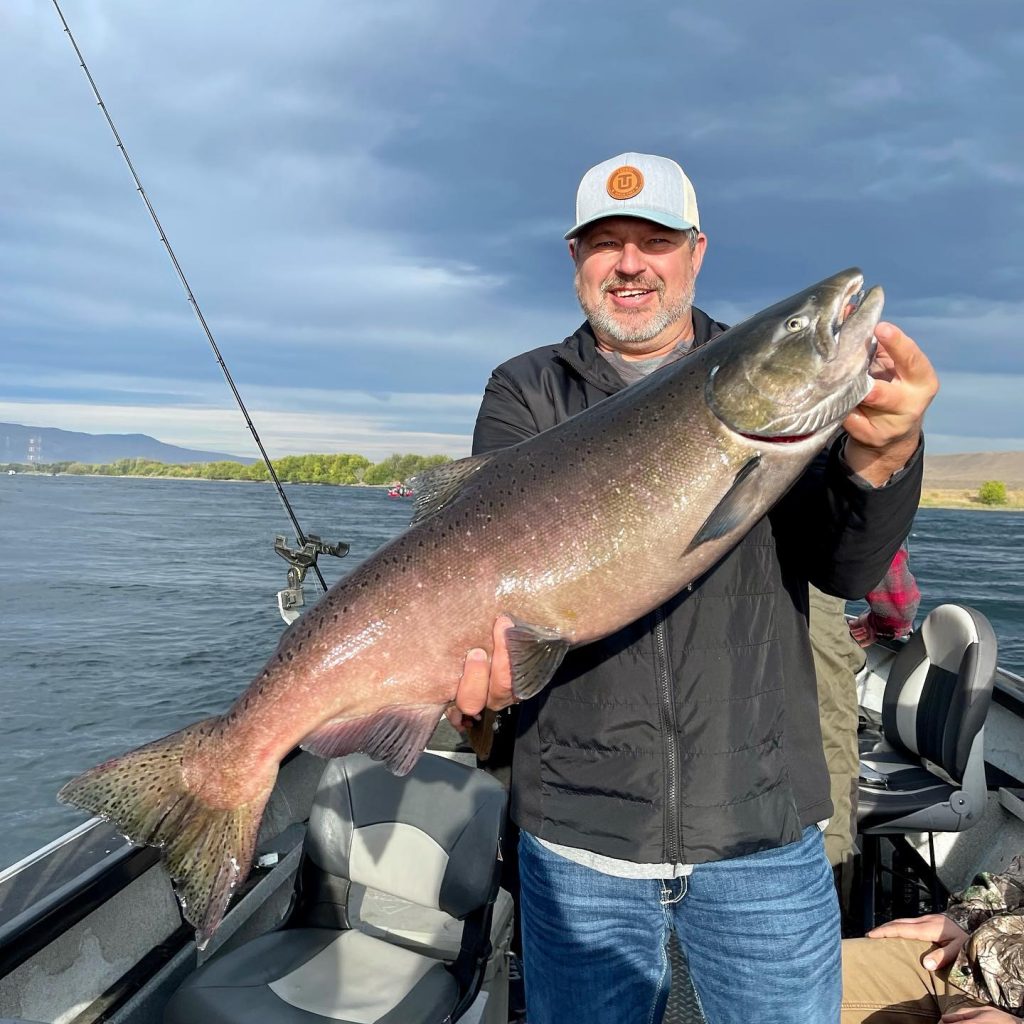
The Upper Columbia at Hanford Reach salmon fishery has been extended to remain open two extra days on Oct. 16-17, after chinook and coho returns were strong enough to stay open. Originally it was scheduled to close on Oct. 15.
At the Hanford Reach, 717 boats with 1,883 anglers and 109 bank anglers from Sept. 27 to Oct. 3 kept 669 adult chinook, 65 jacks and 20 coho. Boats averaged one salmon per boat or 16 hours per salmon. Bank anglers averaged 49 hours per salmon at the Ringold Springs access.
Based on WDFW sampling, an estimated 2,050 adult chinook, 193 chinook jacks, and 62 coho were kept on 5,948 angler trips this past week. For the season, 7,675 adult chinook, 699 chinook jacks, and 163 coho have been landed.
A run update was completed last week for the Hanford Reach fall chinook return. The wild return is currently estimated at 62,250 adult chinook, less than 8-percent below the preseason forecast of 67,293. Based on the in-season update and current harvest allocated to the Hanford Reach sport fishery was the reason behind extending the fishery by two extra days.
The lower section, Highway 395 to the old Hanford townsite powerline crossing, is expected to remain open through Oct. 31. The next in-season update will be made on Friday, Oct. 8.
According to Paul Hoffarth, a WDFW biologist, the upcoming two weeks should offer excellent fishing but the chinook will begin to turn as they prepare for spawning later this month.

